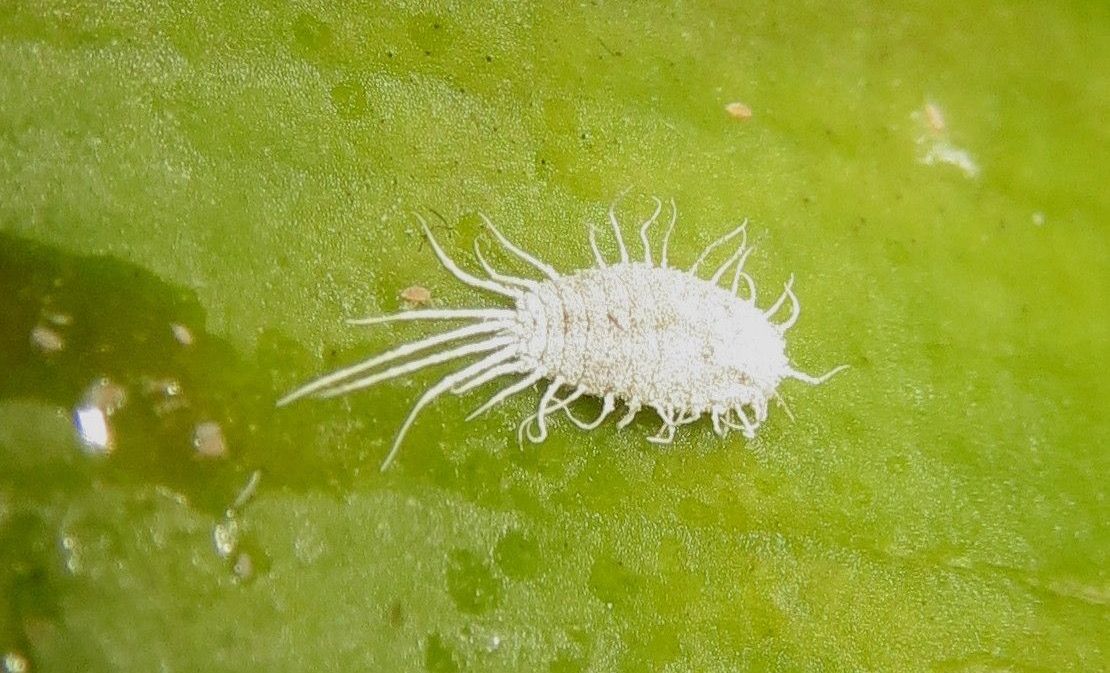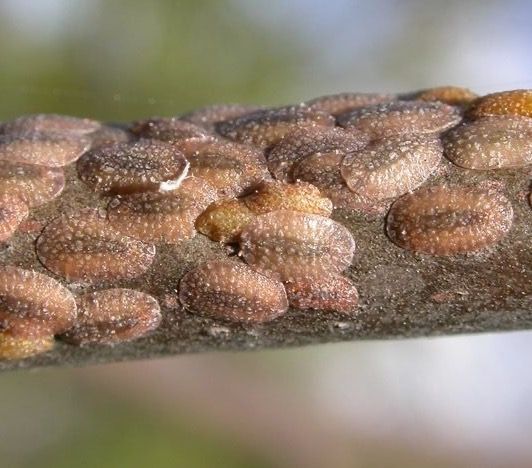Plant Pests and Diseases
Gardening can be rewarding, but plant pests and diseases sometimes challenge maintaining a healthy garden. Identifying and addressing these issues early on is crucial to prevent further plant damage and keep your garden thriving.

Some common pests include aphids, cabbage worms, and powdery mildew across various plants, such as scabiosa, cabbage leaves, and roses.
Familiarizing yourself with these common problems, you'll be better equipped to address them promptly and maintain a thriving garden.
Understanding Plant Pests and Diseases
Plant pests and diseases can cause severe infestations, affecting the health and growth of your plants.
By correctly identifying these issues, you can take effective measures to protect your plants and ensure a thriving garden.
Common pests include spider mites, squash bugs, and aphids.
To identify an infestation, look for signs such as drying leaves, eggs or nymphs on the undersides of leaves, or the appearance of adults.
For diseases, some common symptoms are leaf spots, sudden wilting, curling leaves, discolored foliage, and poor growth.
Signs of Infestation and Infections
Identifying plant pests and diseases early can prevent significant damage to your garden. Careful monitoring helps you spot the signs that something is wrong with your plants.
Yellowing, browning, or wilting leaves may indicate a plant disease.
Keep an eye out for varying shapes and sizes of discoloration on leaves, along with premature leaf drop.
Common Plant Pests
Ants, aphids, and other insects can wreak havoc on your plants. Be vigilant for these pests and take action early to minimize damage.
Some common plant pests include:
- Aphids: Small, soft-bodied insects that suck plant sap. They are usually found in clusters on leaves and stems and excrete a sticky honeydew that can lead to sooty mold.
- Mealybugs: White, cottony insects that also suck plant sap. They are often found in crevices and leaf joints and can cause leaves to turn yellow and drop off.
- Whiteflies: Tiny, white, winged insects that cluster on the undersides of leaves. They also excrete honeydew, leading to sooty mold and stunted plant growth.
- Mites: Minute creatures like spider mites can infest plants, causing leaves to dry and die. Spraying with horticultural soap can help control these pests.
- Beetles: Many beetles may damage plants by chewing on leaves, flowers, and fruits. Regularly inspect your plants and remove beetles by hand when necessary.
- Scales: Small, immobile insects that develop a protective coating and cling to plant stems and leaves. They suck plant sap, causing leaves to discolor and plants to weaken.
Keep an eye out for these common garden pests to help maintain the health and appearance of your plants.
Implement preventative measures and appropriate treatments to keep these pests at bay and ensure your plants thrive.
Identifying and Treating Plant Pests
Aphids

Aphids are small, soft-bodied insects that can be green, yellow, black, or brown. To treat aphids, apply insecticidal soap or neem oil to the affected plants, targeting the insects and any eggs present.
Mealybugs

Mealybugs are white, cottony insects that cluster in crevices of plant stems and leaves. To control mealybugs, dab them with a cotton swab dipped in rubbing alcohol or use insecticidal soap on the infected areas.
Whiteflies

Whiteflies are tiny, winged insects that feed on the sap of plants, causing damage and reducing their productivity. Spray plants with insecticidal soap or neem oil to target the pests and their eggs.
Spider Mites

Spider mites are tiny pests that cause plants' leaves to dry and die. Treat a spider mite infestation by spraying a horticultural soap or neem oil onto the affected plants.
Scale Insects

Scale insects are flat, oval-shaped pests that attach to plants and feed on their sap. To manage scales, remove any visible crawlers and spray plants with horticultural oil or insecticidal soap to target eggs and immature scales.
Snails and Slugs

Snails and slugs are slimy, soft-bodied creatures that chew on plant leaves. To control snails and slugs, set up beer traps or use diatomaceous earth around the base of the plants.
Thrips

Thrips are tiny, slender insects that feed on plants, causing curling and distortion of leaves. Control thrips by washing affected plants with a strong water stream or using insecticidal soaps or neem oil on infested plants.
Nematodes
Nematodes are microscopic roundworms that can damage plant roots. Manage nematodes by adding beneficial nematodes to the soil to combat the harmful ones or using organic matter, like compost, to enrich the soil and promote healthy root growth.
Beetles

Beetles are diverse pests that can chew on plant leaves and stems, causing holes and other damage. To control beetles, handpick them off plants or use insecticidal soap or neem oil to target the pests.
Common Plant Diseases
Bacterial Diseases
Bacterial diseases can cause significant damage to your plants.
Some common bacterial diseases include bacterial leaf spots, which manifest as yellow or brown patches on plant leaves, and bacterial wilt, where leaves and stems become limp and discolored due to a lack of water transport in the plant.
To combat bacterial diseases, apply copper-based fungicides, follow proper watering techniques to avoid creating a damp environment for bacteria to thrive, and practice crop rotation to minimize the spread of diseases across different plants.
Fungal Diseases
Fungal diseases are widespread in the plant world, with powdery mildew, gray mold, rust, and black spots being some of the most common.
These diseases often present as a fungus-like growth on plant leaves and stems or cause discoloration and wilting.
To control fungal diseases, remove and dispose of infected plant parts, apply appropriate fungicides, and ensure proper air circulation in the area where plants are growing to reduce humidity, which can encourage fungal growth.
Viral Diseases
Plant viruses can cause various symptoms, from mosaic patterns on leaves to stunted growth or plant deformities.
Some examples of plant viruses are the tobacco mosaic virus and the cucumber mosaic virus.
To manage viral diseases, focus on preventing infection by controlling insect pests that can spread viruses, selecting virus-resistant plant varieties, and sanitizing garden tools and equipment to avoid cross-contamination between plants.
Identifying and Treating Diseases
Powdery Mildew

Powdery mildew is a common fungal disease that creates a white, powdery film on plant leaves, stems, and flowers. To treat it, mix a 50:50 solution of milk and water in a spray bottle and apply it to the affected areas of your plants.
Leaf Spot Diseases
Leaf spot diseases result in small, dark spots on plant leaves and can lead to leaf decay. To manage these diseases, remove and discard infected leaves and use a fungicide to reduce the risk of the problem spreading.
Gray Mold
Gray mold, also known as botrytis, infects weakened or dying plant tissue with a fluffy grayish growth. Trim affected areas and improve air circulation around your plants to help prevent its spread.
Fungal Diseases
Fungal diseases can affect various plants, leading to discoloration, decay, and death. Apply appropriate fungicides to treat fungal diseases and practice good plant hygiene to minimize the risk of infection.
Rust
Rust is a fungal disease that causes reddish-brown spots or patches on leaves and stems. To treat rust, remove and discard infected plant parts and apply a rust-specific fungicide to your plants.
Root Rot
Root rot is a condition that causes plant roots to become discolored, mushy, and eventually die. Trim the affected roots and treat the remaining healthy roots with a fungicide to prevent further spread.
Plant Blight

Plant blight is characterized by sudden, severe, and spreading damage to leaves, stems, fruits, or flowers. To manage blight, remove infected plant parts, maintain good air circulation, and apply appropriate fungicides.
Damping-Off
Damping-off is a fungal disease that affects seedlings, causing them to collapse and die shortly after sprouting. To prevent damping-off, use a sterile planting medium, avoid over-watering, and maintain proper spacing between seedlings.
Canker

Canker disease presents as dark, sunken areas on plant stems or branches. To treat canker, prune affected plant parts, sanitize pruning tools, and improve growing conditions to support overall plant health.
Wilt
Wilt is characterized by plants losing vigor and collapsing because of damaged vascular systems. To manage wilt, maintain proper soil moisture, remove infected plants, and use resistant varieties when possible.
Mosaic Viruses
Mosaic viruses cause a mottled or mosaic-like pattern on leaves and can lead to reduced plant growth. To manage mosaic viruses, remove and destroy infected plants, and control insect vectors such as aphids that spread the virus.
Remember always to follow proper gardening practices and use preventive measures to minimize the risk of plant diseases affecting your plants.
Prevention and Care Techniques
Watering and Drainage
Providing the right amount of water is essential when caring for your plants. Overwatering can lead to diseases, while under-watering can cause stress and pest infestations.
To maintain proper drainage, choose pots with drainage holes and use well-draining compost in the potting mix.
Light and Air Circulation
Proper light and air circulation are crucial for healthy plant growth and preventing diseases. Ensure your plants receive adequate light, and regularly rotate them to ensure even light exposure.
Additionally, providing good air circulation can minimize the risk of fungal diseases. Space your plants apart to avoid overcrowding and promote air movement.
Proper Potting and Repotting
Using suitable pots and regularly repotting plants can help prevent pests and diseases. Choose pots that are the appropriate size for your plants and have drainage holes.
When repotting, replace the old compost with fresh, well-draining compost to reduce disease risk and promote healthy growth.
Specific Plant Pests and Diseases
Common Pests and Diseases of Fruit Trees
Aphids are a common pest on fruit trees like apples, pears, and cherries. You can release natural predators like ladybugs or use insecticidal soap to control them.
Powdery mildew affects plants like apples, grapes, and roses; treat it by pruning infected parts and using a fungicide.
Common Pests and Diseases in Edible Garden
Tomatoes, peppers, and potatoes are susceptible to late blight. To prevent this disease, plant resistant varieties and practice crop rotation.

Damping-off, a soil-borne fungal disease, often attacks seedlings; avoid overwatering and use sterile soil mixes to prevent this.
Common Pests and Diseases in Houseplants
Mealybugs are common pests on houseplants like ivy and jade. To control these pests, you can use a cotton swab dipped in rubbing alcohol to remove them.

Sooty mold, caused by a fungus that grows on the sugary honeydew excreted by pests like aphids or scale insects, can be cleaned by wiping the affected leaves with a damp cloth.
Conclusion
To maintain a healthy garden, you must be knowledgeable about common plant pests and diseases.
Regularly inspect your plants and take appropriate measures to prevent and control any issues that might arise.
By accurately identifying and addressing plant problems, your plants will have a better chance to flourish.
Keep learning and gaining experience with plant care, resulting in a beautiful and thriving garden space.
Frequently Asked Questions
What are the common signs of plant pests?
Some common signs of plant pests include yellowing or curling leaves, holes or bites in foliage, and sticky residue or honeydew on leaves. You may also see pests on the plant's stems or the underside of leaves, such as aphids, scales, or spider mites.
How can plant diseases be identified?
Plant diseases can often be identified by their distinct symptoms, such as discolored or spotted leaves, wilting, stunted growth, or mold. It's essential to pay close attention to the appearance of your plants and look for any unusual changes that may indicate a disease.
What are the most effective strategies to manage plant pests?
To manage plant pests effectively, you should regularly inspect your plants for signs of infestation, isolate affected plants from healthy ones, and use cultural, mechanical, and chemical control methods. This may include pruning to remove infested areas, using insecticidal soaps or oils, or introducing natural predators like ladybugs.
What techniques can be used to treat plant diseases?
To treat plant diseases, first identify the specific disease affecting your plants. Once diagnosed, you can apply targeted treatments like fungicides or bactericides, depending on the issue. Remember to follow label instructions and required safety measures when using chemicals.
How can you prevent plant pests and diseases from spreading?
Prevent plant pests and diseases from spreading by maintaining proper sanitation and good cultural practices in your garden or growing space. This includes regular inspection and removal of infected plants, proper spacing, adequate watering, and using disease-resistant plant varieties when possible.
Are there any natural remedies for controlling common plant pests?
Yes, there are several natural remedies for controlling common plant pests. Choose insect-repelling plants like marigolds or lavender to attract beneficial insects, create homemade sprays with ingredients like neem oil or garlic, or introduce natural predators like ladybugs or lacewings that help keep pests under control.



